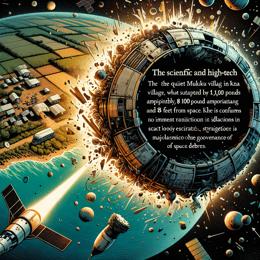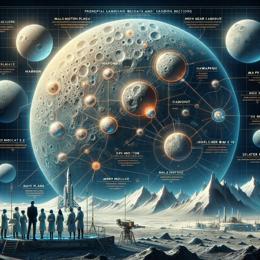Image created by AI
Controversy Erupts Over Racial Depictions in Major Genomic Study
A significant genome study published in Nature has stirred considerable discourse on social media due to the use of visual depictions of genetic diversity that could potentially be construed as supporting the controversial concept of distinct human races. Chaos ensued amongst the scientific community, with numerous individuals raising concerns over the implications of the published findings and their potential misuse.
The study, which is part of the All of Us Research Program operated by the NIH, aimed to chart the genetic makeup of a vast cross-section of the United States population, acknowledging the historical lack of diverse genetic data particularly from those of non-European descent. With participation from nearly 250,000 volunteers, the initiative has managed to identify over 1 billion genetic variants—more than a quarter of which have been deemed novel—signaling a potentially monumental leap forward in understanding an array of diseases and their unique impacts across different demographics.
The bone of contention lies in a figure within the study that synthesized the intricate data into a simplistically visual form. Criticism has centered on an algorithm known as uniform manifold approximation and projection (UMAP), used in the study to represent the genetic relatedness of the participants. Critics argue that the resulting visual, consisting of blobs each representing a racial group, inaccurately suggests discrete genetic race categories due to the UMAP’s propensity to condense complex data into distinct clusters.
Luminaries in the field, such as Ewan Birney and Jonathan Pritchard, have voiced their trepidations, fearing that such representations might propagate the misleading notion that genetics validate distinct human races. This method of data simplification could feed into dangerous misinterpretations by the public at large.
In an official statement, Josh Denny, CEO of All of Us, concurred with the sentiment that their communication could have been more transparent and admitted that the critique has underlined the swift evolution and the complexity inherent within this domain of study. Though the authors have not yet altered the figure, ongoing deliberations with Nature have been disclosed by a program spokesperson.
Critiquing the representation further, Alexander Bick, corresponding author of the study, accepted that there may have been clearer ways to label the data illustrated in the contentious figure. Bick defended the use of UMAP citing its common application in recent significant genomic studies, while persisting that rendering such complex data into a two-dimensional format unavoidably presents a substantial challenge.
The debate has escalated to the point where prominent geneticist Michael Eisen has publicly called for the retraction of the paper from Nature, labeling the visual representation as scientifically invalid and predicting its potential appropriation in racist arguments for generations to come.
Despite the uproar, there appears to be recognition from parts of the scientific community of the study's overarching objective to advance inclusivity in genomic research. Geneticist Daniel MacArthur has pointed out that while the All of Us program has, by and large, been exceedingly considerate in its efforts to incorporate diversity, the controversy serves as a crucial reminder of the sensitivity surrounding ancestry labels and their impact.
What this incident has laid bare is the complex and sometimes contentious intersection of scientific inquiry, data visualization, and sociopolitical implications—a triad that demands careful navigation in the communication of research findings.










